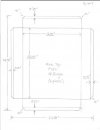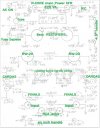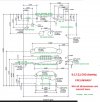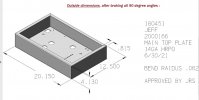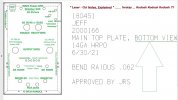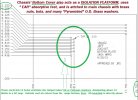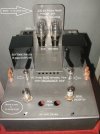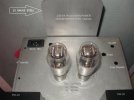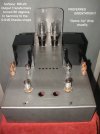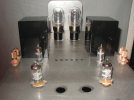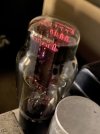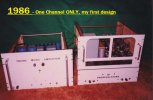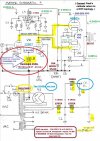08-31-2021 ............... Mini UPDATE
A box with eight Shilchar ( R-Core 320 VA ) custom - made Power Transformers were shipped from Thane, INDIA, to me in the USA, t.oday.
Expected arrival - in about ten days. Thanks so much......F.M.s Hari Iyer and Sadik.
Chassis are in the shop in my town, getting corners welded ( 14 gauge steel ). More to follow.
Heatsinking the Cathode Resistors of a Direct Coupled Amplifier :
In a two stage directly coupled amplifier, the entire Output ( or Finals ) stage must be " raised" above the amp's ground voltage, by a) the amount of voltage on the plate of the Input tube and b) by the self-bias voltage required for the Output / Finals tube to operate.
In a way, the entire direct coupled amp's operation " rests " upon a carefully-implemented Cathode resistor ( Rk ) of the tube in the second stage.
This new 6005 amp has 210 VDC on the plate of the first ( Driver ) tube, and the 6005 tube requires 15 volts to be properly biased. So, with simple addition, the Cathode resistor needs to put the 6005's cathode voltage 225 VDC above ground.
This always requires a large and powerful resistor, in any DC amplifier, for the Output tube's cathode resistor.
At 32.2 mA. of bias, each 6005 will have an Rk that power-dissipates ( 225 VDC times 0.03233 Amperes ) constantly 7.27 Watts per cathode resistor, one Rk for each channel.
All resistors " sound different " from each other. It is even more difficult to choose resistors based on their sound quality - when we need to constantly dissipate 7 plus Watts in one !! From experience, for high-powered resistors, thankfully I know there are three acceptable resistor brand / type choices., resistors that sound good !! First is a vintage wirewound Ohmite Brown Devil, 200 series. Second is a more modern ARCOL HS series, 50 Watt wirewound / chassis mount. Third is a very modern Caddock special " Power Tab" film resistor. These three will be acceptable, music performance-wise.
I decided to employ the Caddock Power or Kool Tab film resistors. Here is the Michael Percy catalog data :
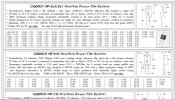
The Caddock Film resistors are designed to be mounted directly onto the metal chassis, or any large heatsink, to dissipate their 20 Watts or so of rated power. There is a large ( 2.375 by 3.5 by 0.75 inch ) black annodized aluminum heatsink I like to employ. It has 21 fins, so it has lots of surface area, to dissipate power and cool the " Kool - tab " device.
In this 6005 amp's thread, shown on Pages 1 ,
first post, second photo - we can clearly see one of these heatsinks, cooling off both channels' Cathode Resistors ( Rk ) in the prototype stereo amp. (
see photo ). I was never happy with this. I thought the heatsink was not adequate, to keep the resistors' really as cool as I would like, for long term reliability...thinking 100 years !! So, for the finished build, I decided last month to enlarge the heatsink's cooling capability, while at the same time, conserving internal chassis space. I wanted the execution to be simple, and mount with two bolts. Here is what I came up with :
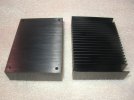
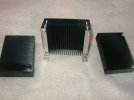
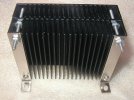
.The Kool Tabs get mounted on the
flat surface.
This uses 4-40 USA stainless steel hardware. Four two inch long bolts, a dozen 4-40 nuts, and two Keystone Electronics 1568 " board brackets ". All readily-available parts. I am quite pleased with the simple assembly, and wanted to show it to you !! The six new chassis, already have adequate holes for ventilation - laser cut on the top and bottom.
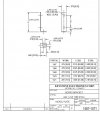
Since the entire DC amp " rests" on the two Cathode ( Rk ) resistors, I thought it would be good to double the heatsink size as shown. This new doubled-up heatsink dissipates 7.27 Watts times two channels for stereo, or about 14 plus Watts, continuous.
I hope, " for 100 years ".
Jeff
